Read this blog: The one where Robert orders some shirts
Sunday 17th March 2024
Matilda has been tempted by the traditional, conical nón lá or leaf hats but did not want to raise any expectations, or get into any extended negotiations, by trying one on at a street stall or in a market.
However, there was a display in the lobby at our hotel and she took the opportunity while we were waiting for our taxi to the station to try one on for size. Although she felt it was quite flattering, she did not think she could pull it off back in the more temperate climate of the UK.
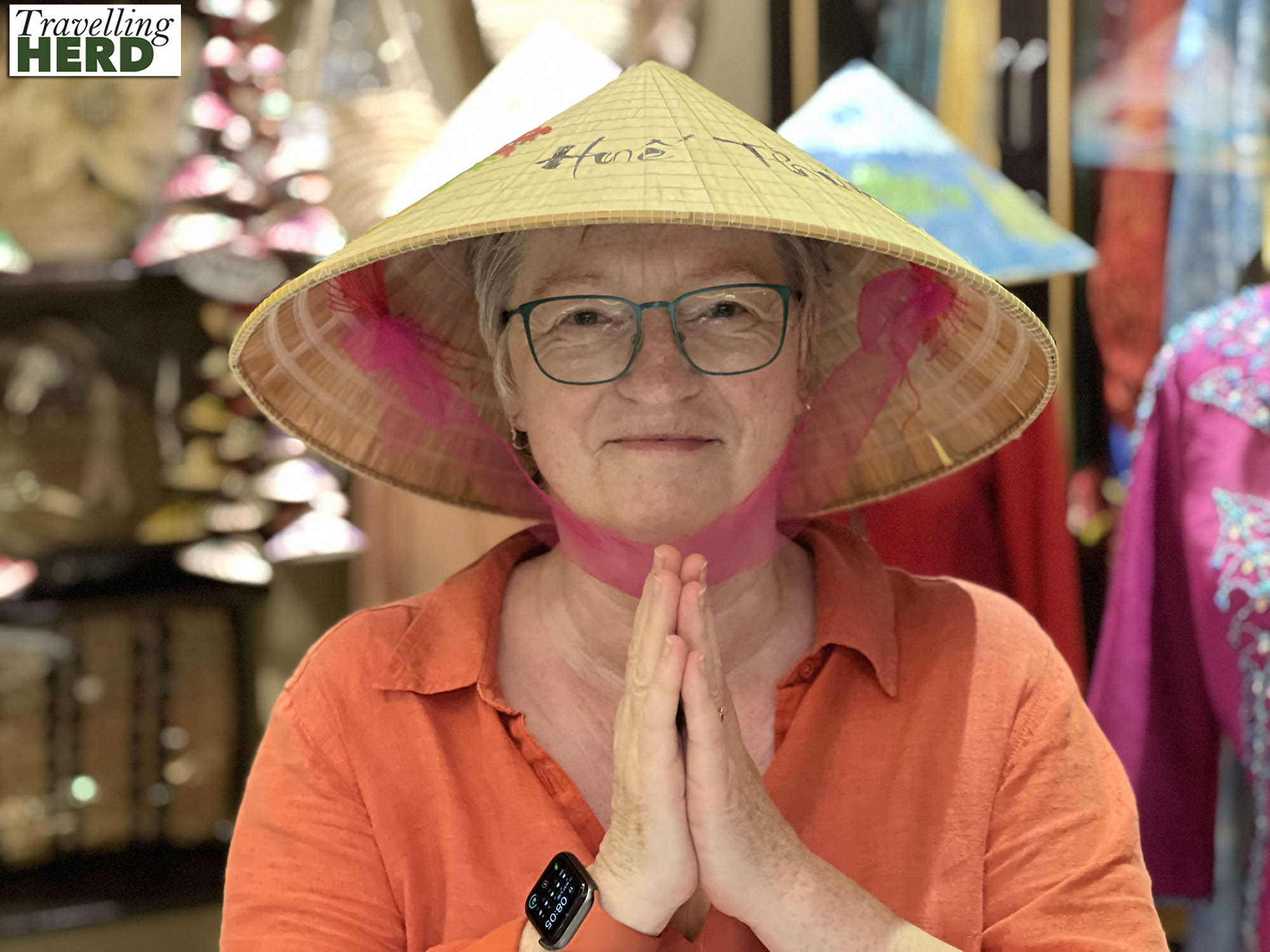
Huế Railway Station was built by the French and is apparently now considered to be one of the most beautiful stations in Vietnam although it was allegedly described as a “rectangular horror” in 1913. How times and tastes change.
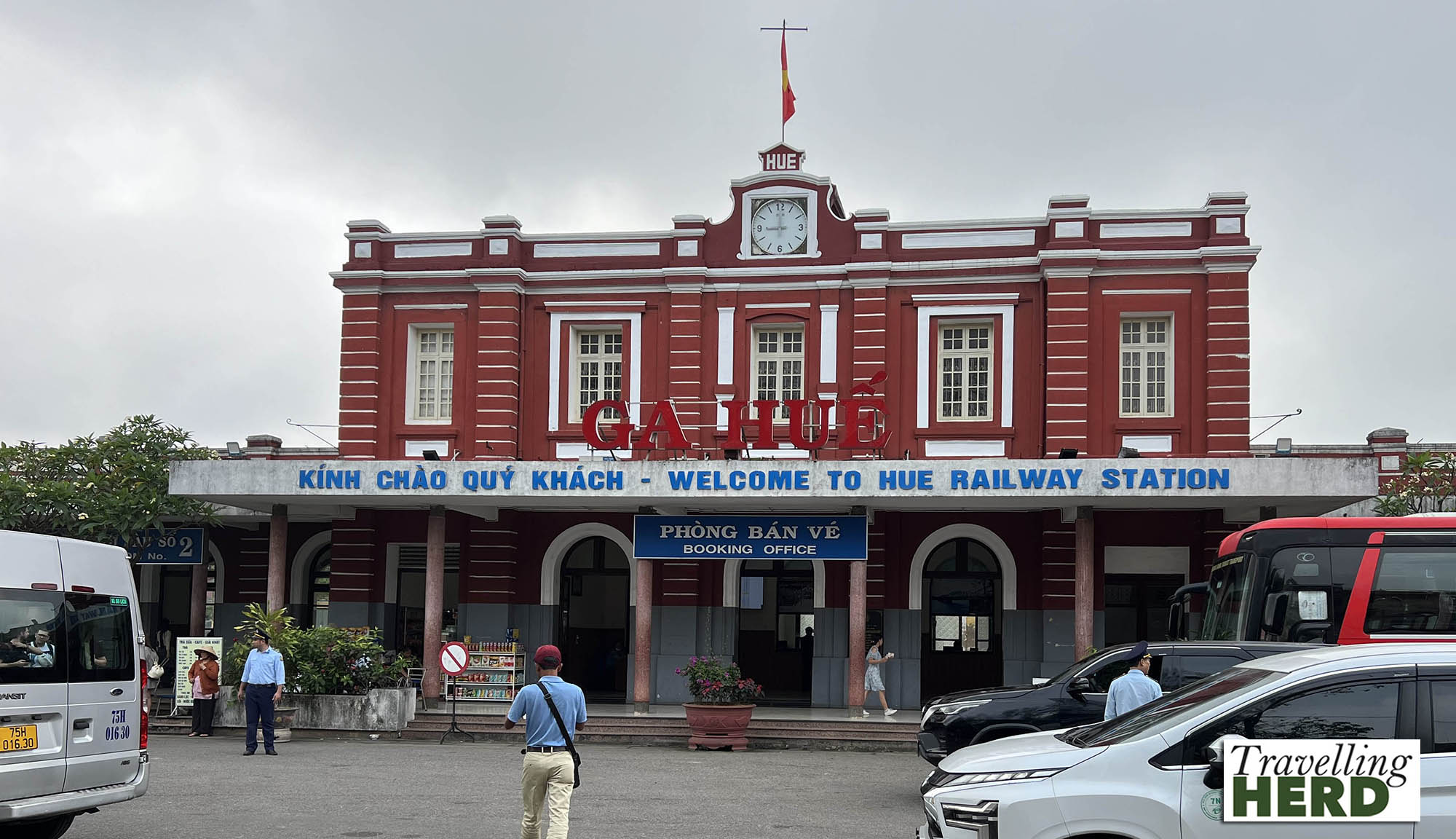
Huế Railway Station has several waiting rooms and we were directed to Waiting Room 2, to the right of the station. Of course Robert tried to go straight onto the platform, to get a better view of the trains but the doors were locked. Several people checked our tickets while we were in the waiting room to make sure we were indeed waiting in the right place. Shortly before a train is due, ticket inspectors open the doors onto the platform, check the tickets once again and only then let those passengers for the next service through.
As soon as you arrive on the platform, the stallholders set out some of the ubiquitous small stools for people. As we were about to be sedentary for the next three hours on the train we did not feel the need to sit down. Besides, they are like primary school furniture and both Robert and Matilda now find it to be a very long way down and back up again.

We were also unsure whether there would be a charge for using the seat but it seems it was a free service possibly because it made passengers a sitting target to be sold other wares as they waited for the train to pull in.
As we left Huế for Hội An the mopeds were queueing at the level crossings. We felt this was a more orderly process than the one we had seen in India where people would regularly try to sneak under the barriers.
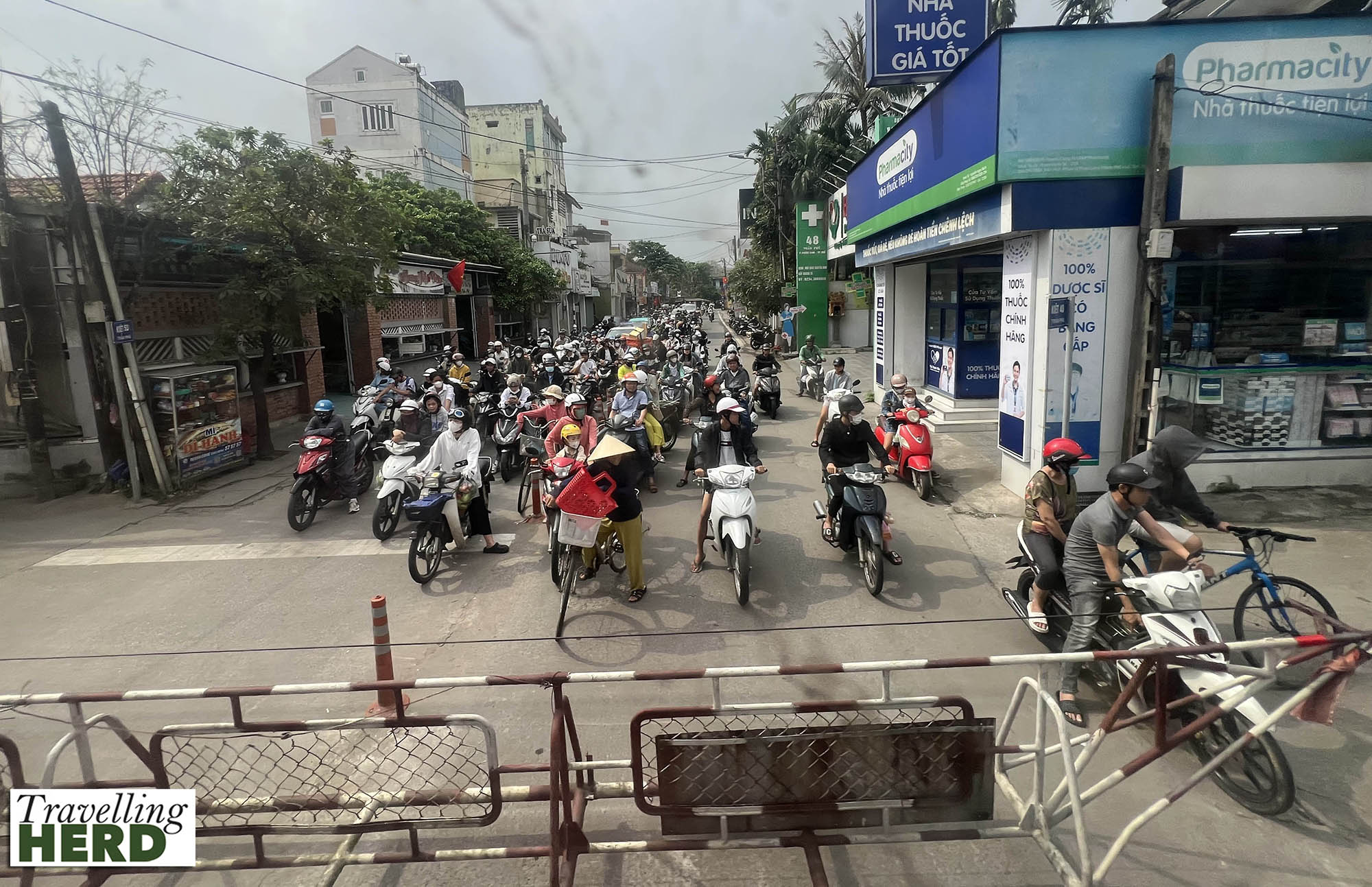
There is something quite satisfying about being able to see the train you are travelling on ahead of you or behind you as it rounds a bend on the track. The countryside was lush and green as we travelled southwards.

There is no railway service to Hội An itself so we had to take a taxi from Da Nang station. Even when the locals quote an outrageously inflated amount for Westerners, it still seems cheap to us so when we know we want to take a taxi we have started checking fares on the Grab app to give us a baseline for negotiation. In all honesty, the inflated price would not break the budget but we do not want to seem too much like a pushover.
We feel slightly less embarrassed at paying over the odds for something since Faith and Vincent, the American Vietnamese couple we met in Hạ Long Bay, told us that they were also regularly quoted a higher price than a native Vietnamese would be despite being fluent native speakers.
After checking in at the hotel, we took a stroll towards the old town which is an attractive combination of French influenced architecture and the colourful hanging lanterns which have come to symbolise the city.
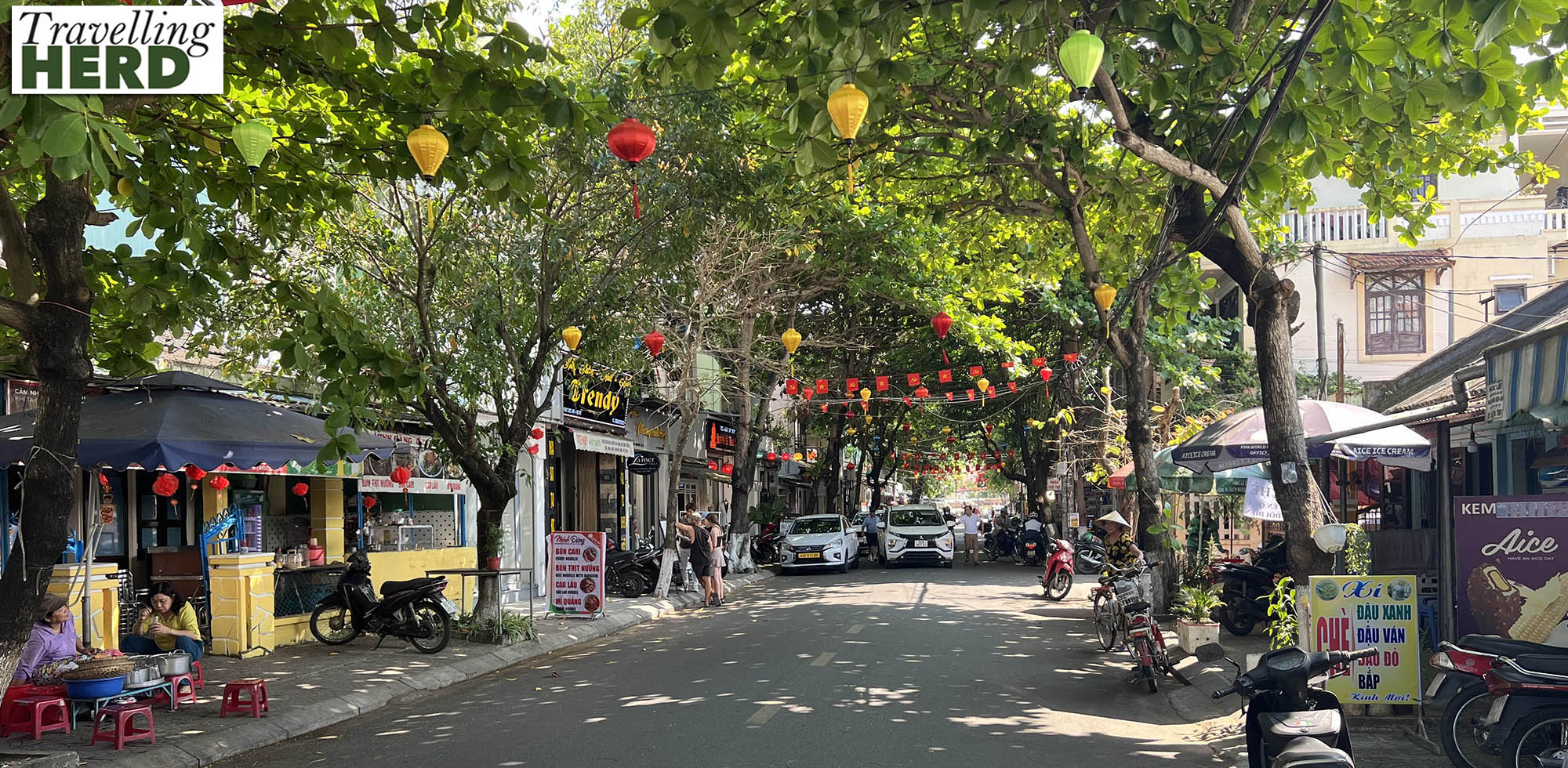
Hội An is famous for being a city where you can get any type of clothing made quickly and cheaply. The staff at the hotel were extremely enthusiastic and helpful when we arrived and as part of their usual spiel recommended several tailors.
We decided to go to investigate Trần Hưng Đạo – the street where almost every shop offered a tailor-made clothing service.
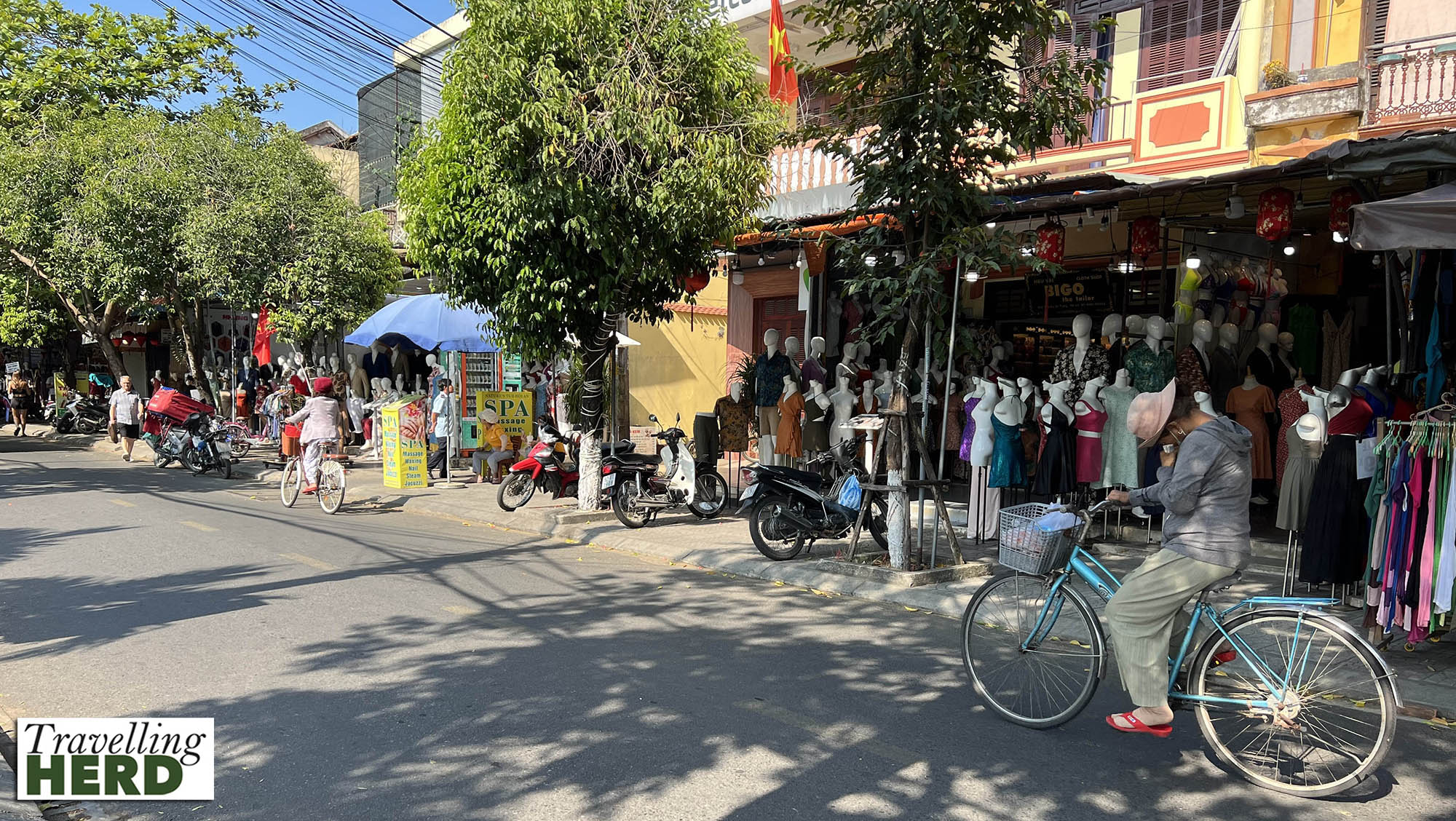
Our rationale was that if we wanted anything made, we should place our order as early as possible to allow time for the seamstresses to work their magic. As Robert has several Great Rail Journeys tours coming up as Tour Manager this summer he decided that he would like to ask about getting some formal white shirts made.
We went first to LeLe Cloth: one of the places recommended by the hotel receptionist as having an especially wide and varied range of material: swatches were displayed around all the walls. We are confident that there was some financial arrangement between the two businesses but it saved us the difficulty of choosing one establishment out of so many as we walked down the street.
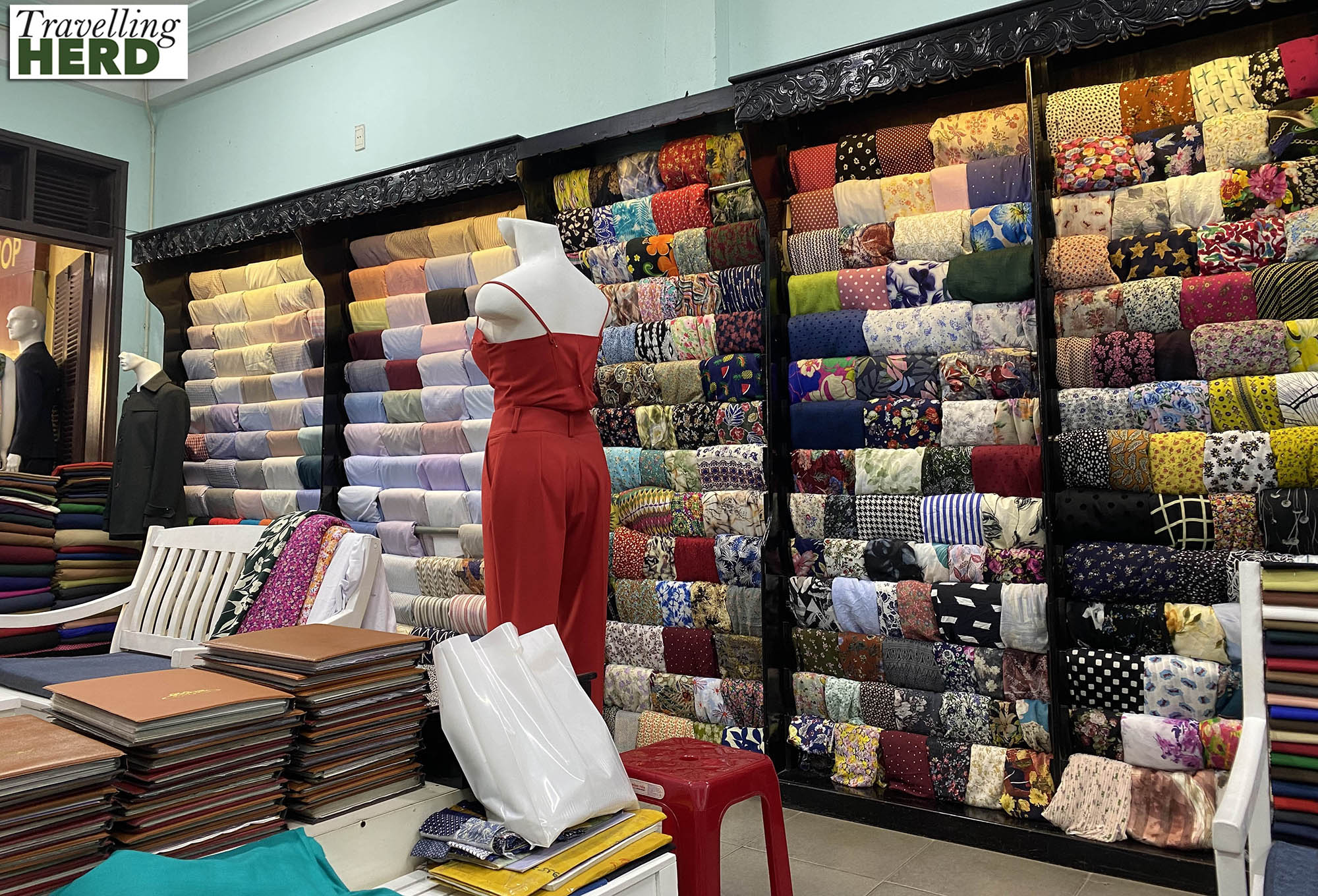
To be honest, as soon as we walked in through the door, it was unlikely that Robert would be allowed to leave without placing an order. Very swiftly and seamlessly, [pun intended] Matilda also found herself being measured up for a pair of linen trousers. Two would be almost as cheap as one since the skilled work is in making the pattern.
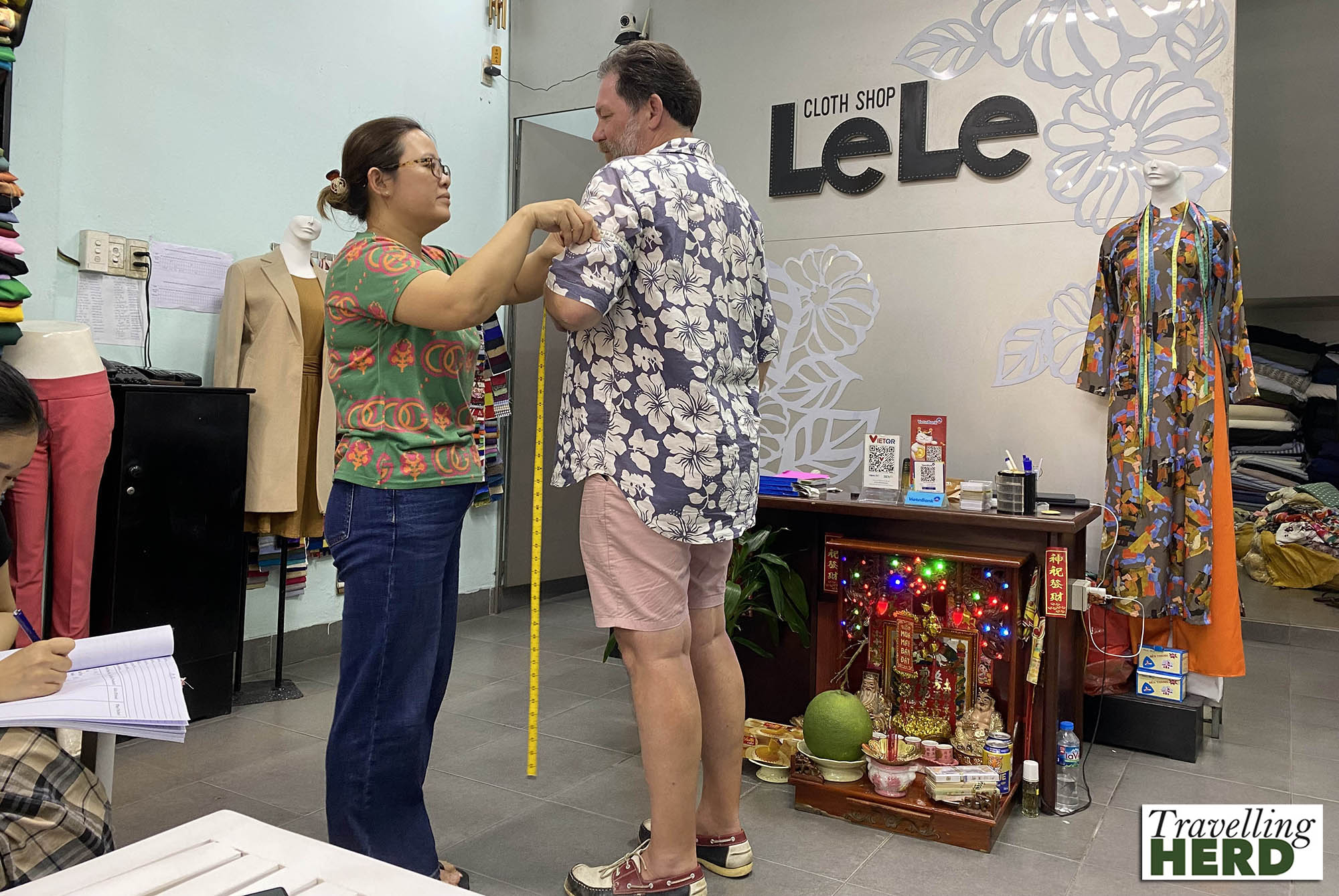
Staff on the shop floor take down detailed measurements and requirements for each item of clothing to pass on to the tailors and seamstresses who must work through the night: we were quoted a turnaround of less than 24 hours.
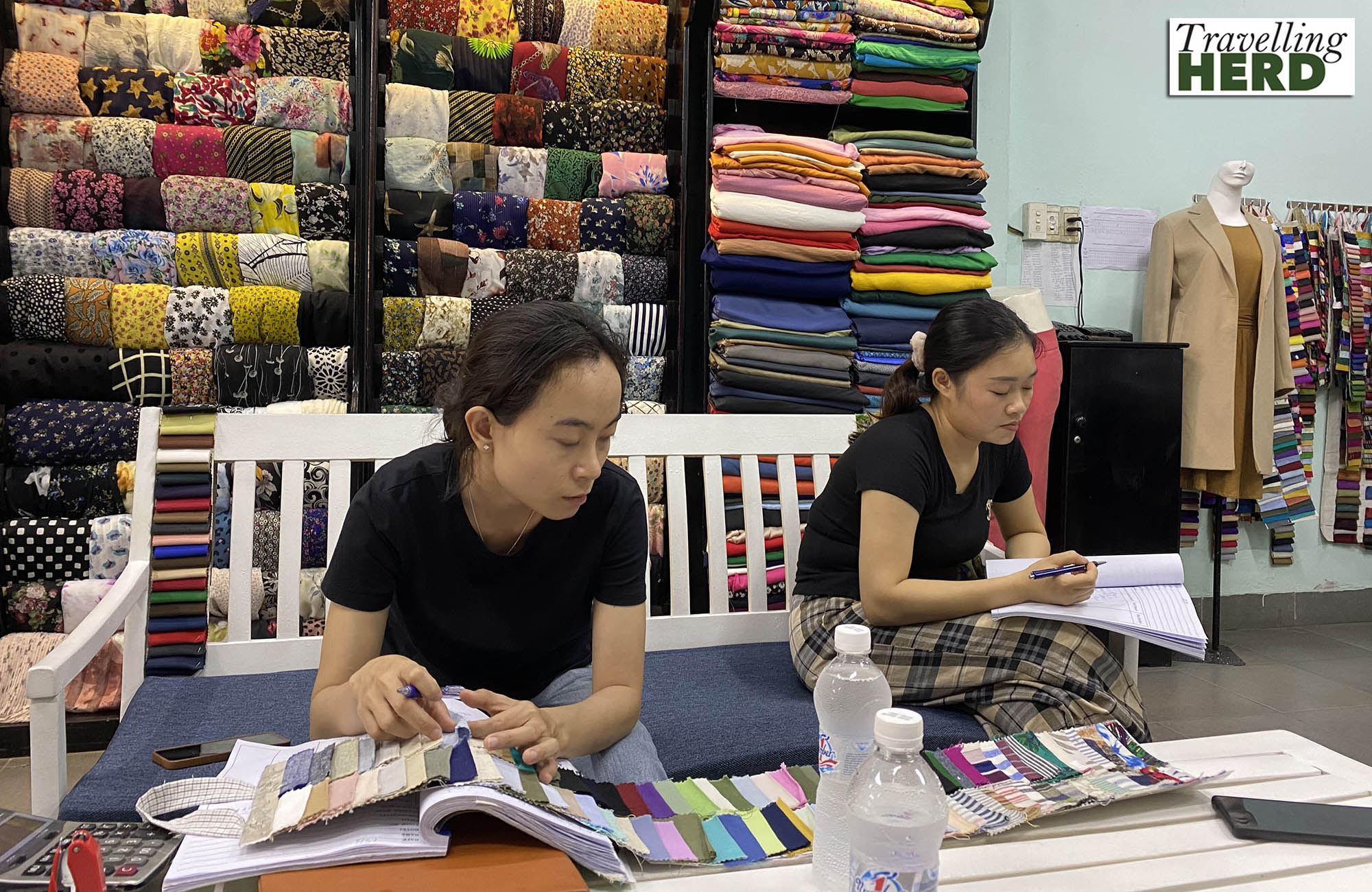
Matilda was particularly pleased that the service included a free bottle of water each which we took with us out into the afternoon heat.
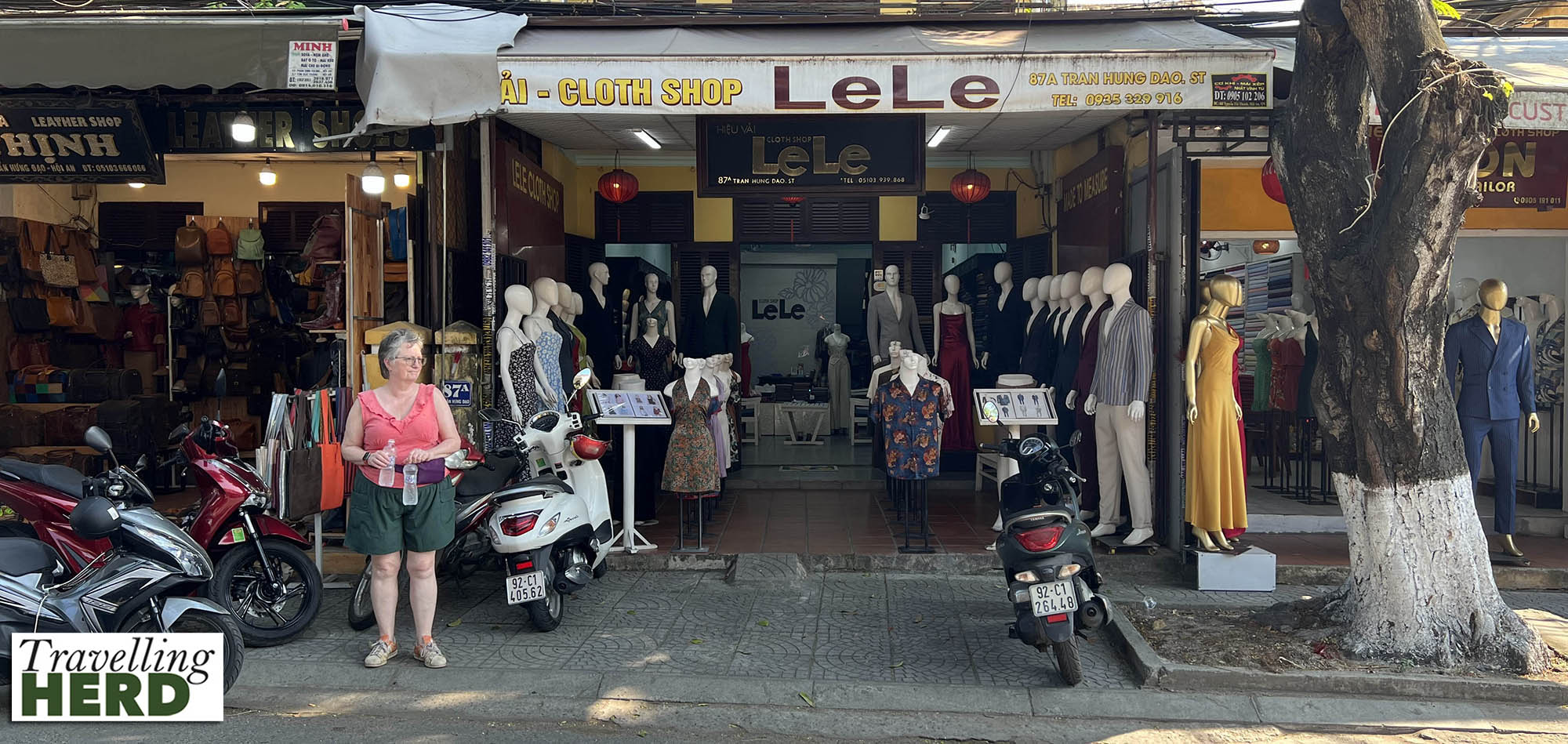
Leaving our tailor’s we walked across An Hội Bridge over the Thu Bồn River to Nguyễn Phúc Chu, where we found decorative lanterns strung across the street and plenty of riverside bars and restaurants.

As it was St Patrick’s Day, and there were front row seats allowing us to watch the passers by, we stopped at The LyLy, which despite its name was an Irish Sports bar.
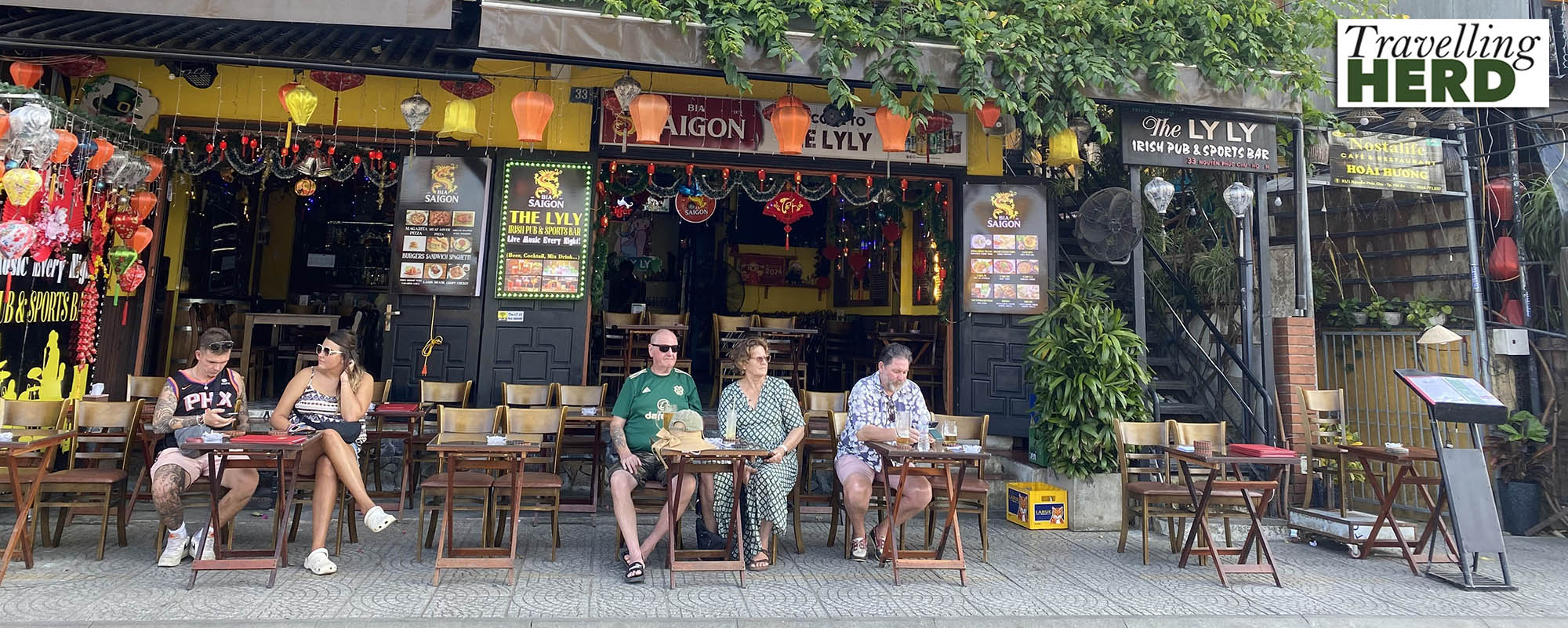
We discovered that The Shamrock Irish bar, several doors along from The LyLy, had organised a promotional event which was a strange amalgam of a Vietnamese Dragon Dance – intended to promote happiness and eliminate bad spirits; a St Patrick’s Day drinking session and an English May Queen celebration.
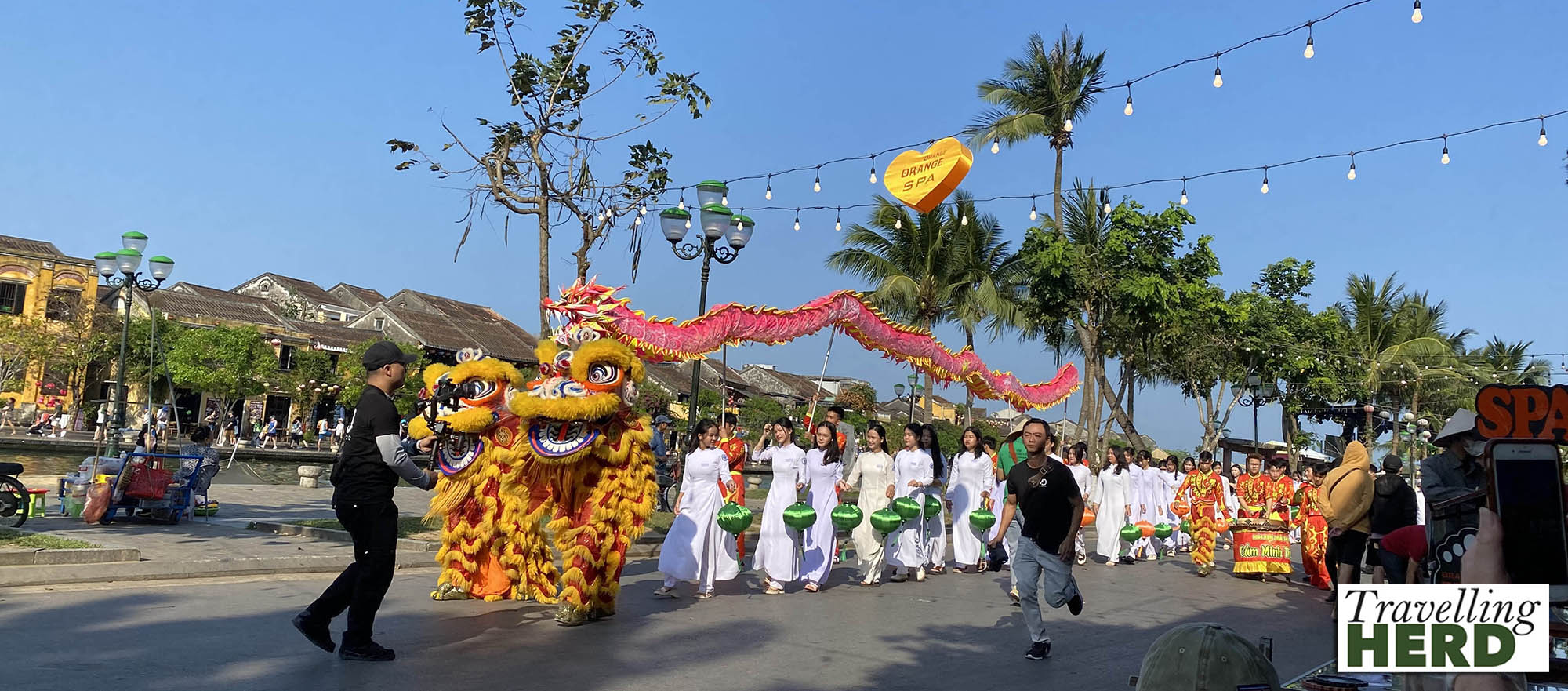
Two traditional Vietnamese dragons shimmied their way along the street with a group of young men dressed in dramatic red costumes carrying dragon streamers aloft behind them.
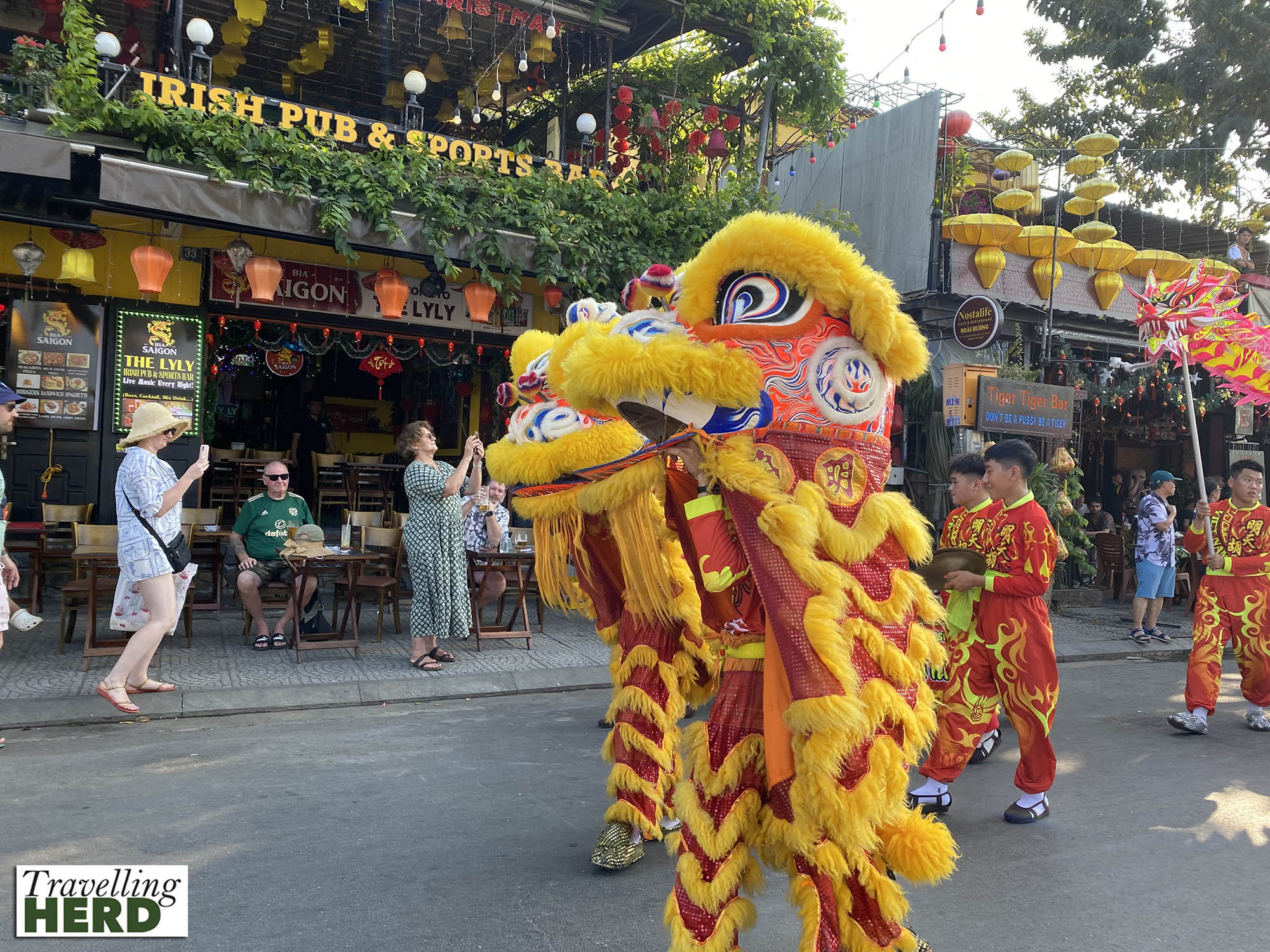
This was followed by a troupe of girls dressed in traditional white áo dài costumes, comprising a tunic and trousers, and carrying green lanterns with 17/3 printed on them. It was an unexpected fusion of cultural signifiers but it nevertheless worked as entertainment [see Video of the day].
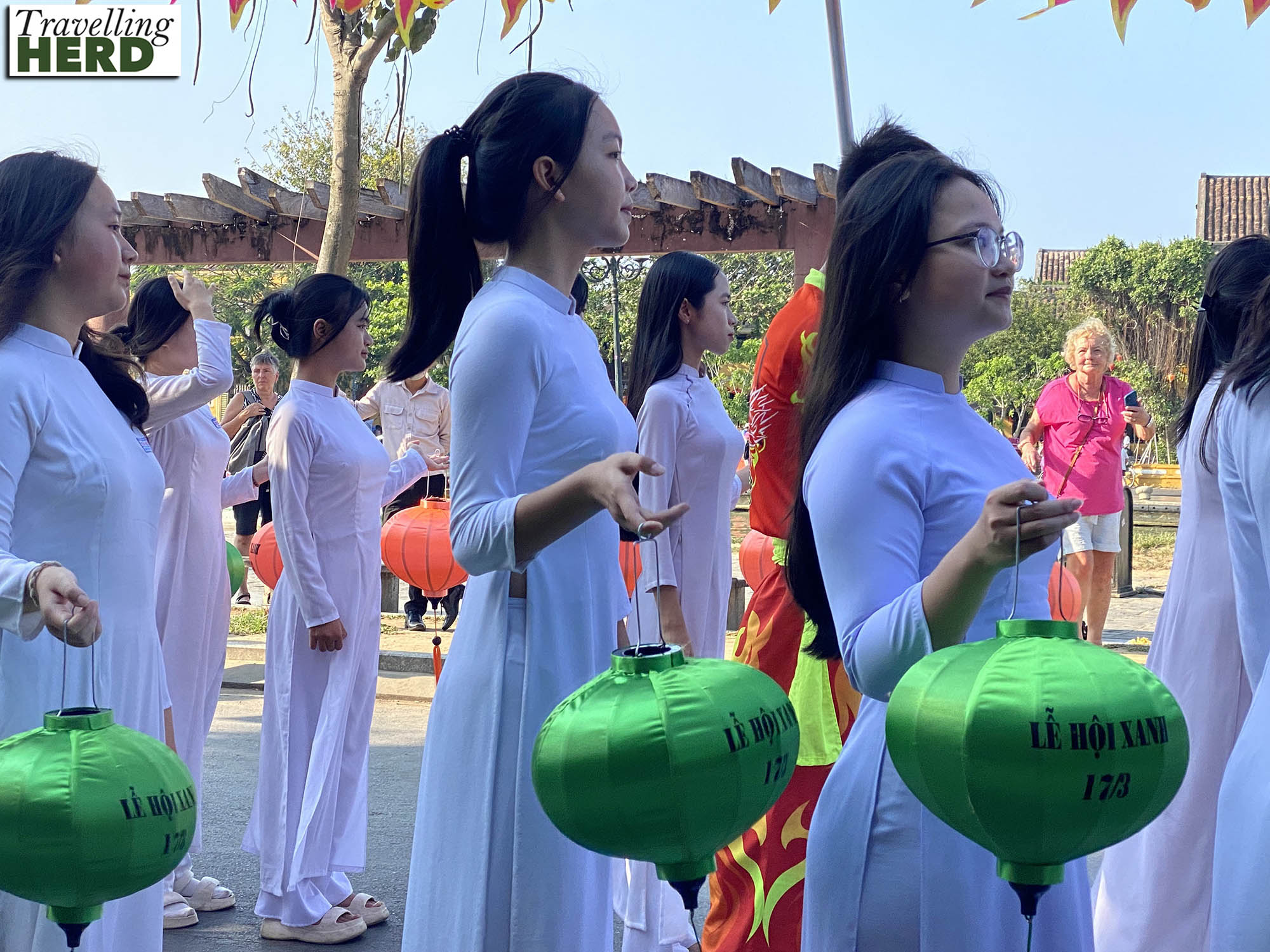
After the procession, looking across the river the view felt strangely European. As dusk approached, the boatmen started to appear with lanterns lit on their craft ready to take people up and down the river. With a single oarsman standing at the back, propelling and guiding the vessel with a long oar, they resembled Venetian gondoliers.
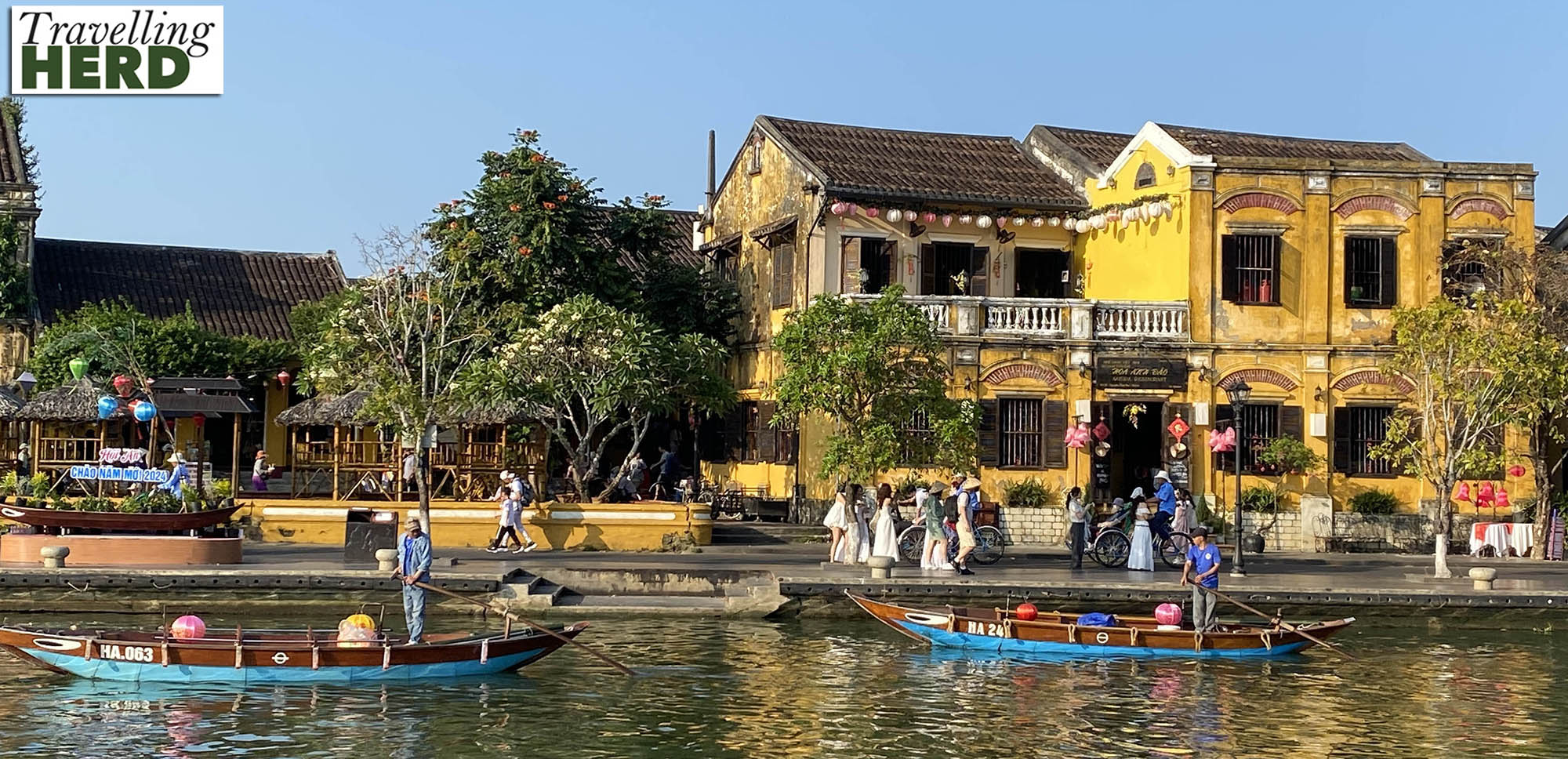
As the light fades, many of the electric lights in buildings are turned off and the lanterns seem to shine more brightly. Crowds come out to enjoy the spectacle. In particular, we noticed young women, often wearing bridal white, striking lots of poses we assumed would shortly be posted on social media.
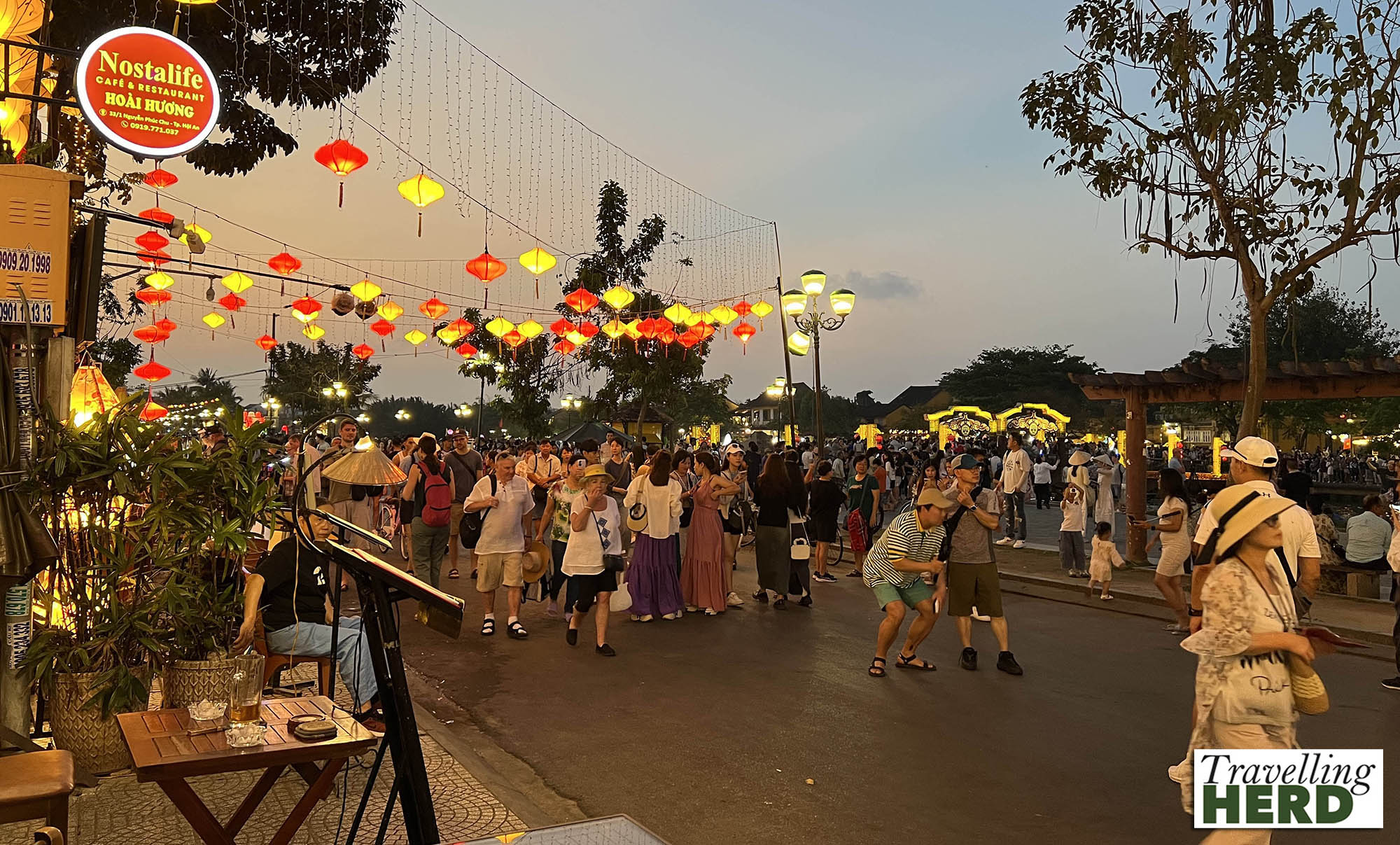
Apparently, the Hội A lantern festival takes place on every 14th day of the lunar month while the moon is at its fullest and brightest. The next festival was scheduled for 23rd March but even though our visit did not coincide with a full moon, every evening seemed to be a celebration.
Releasing the lotus flower lanterns onto the river is another tradition meant to bring good fortune. Candles are lit in small card boxes shaped like flowers and set adrift. Whilst this, coupled with the lanterns on the boats, undoubtedly creates a spectacle, we felt these lanterns might also become a hazard to wildlife so decided not to try to augment our good luck in this way.
Much like Venice, the waterways become very crowded.
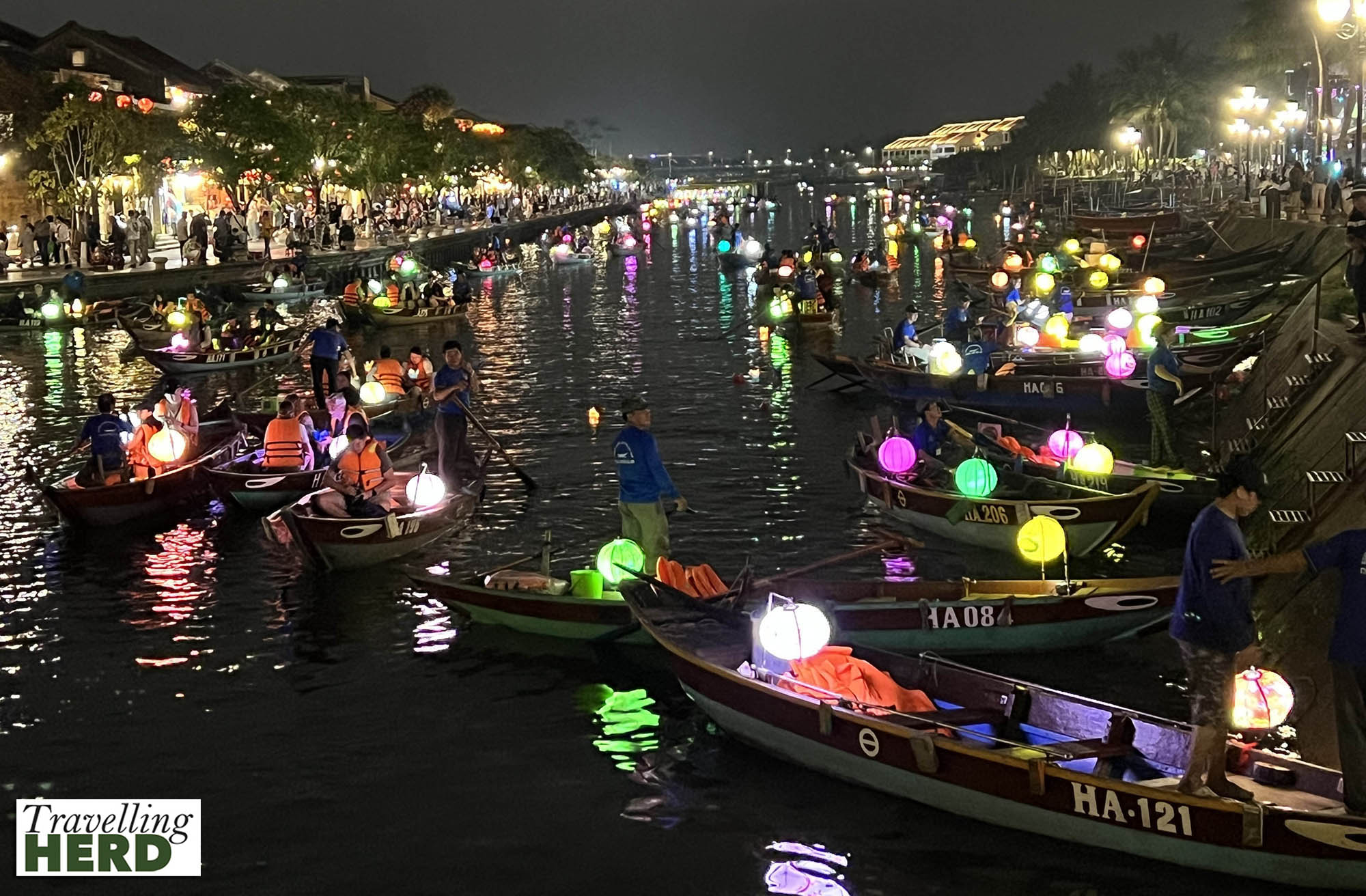
Video of the day:
Selfie of the day:
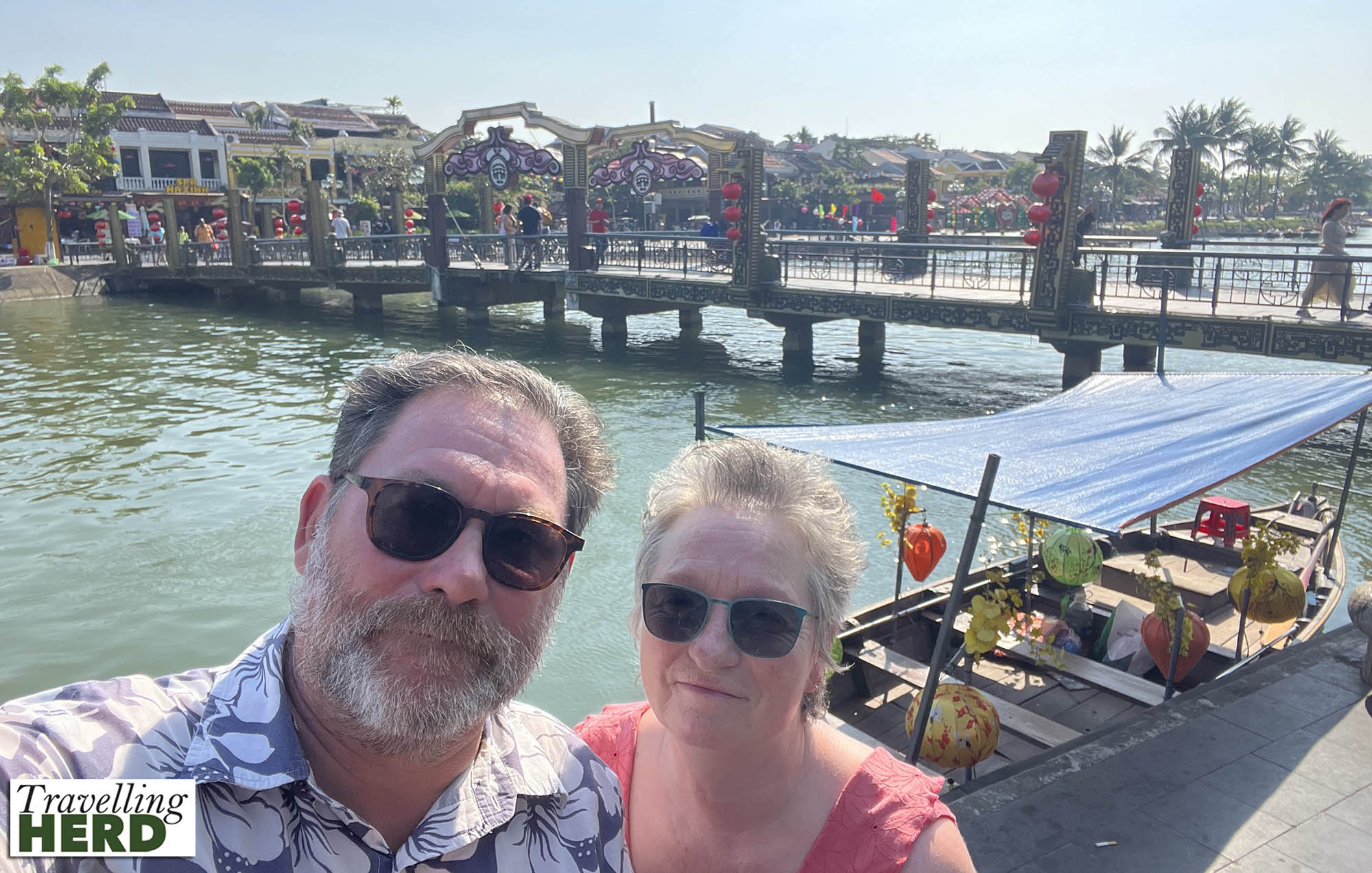
Dish of the day:
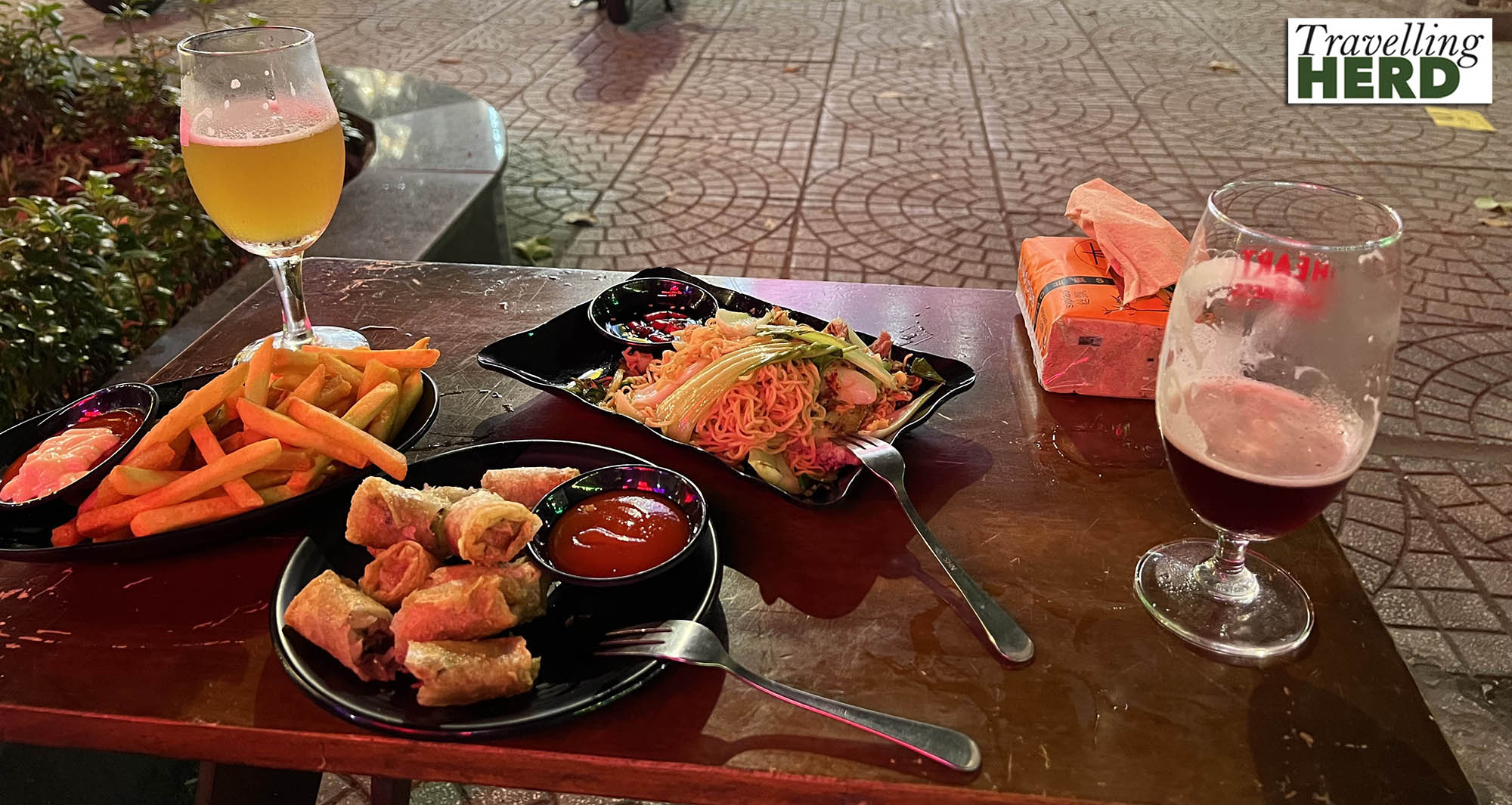
Route Map:
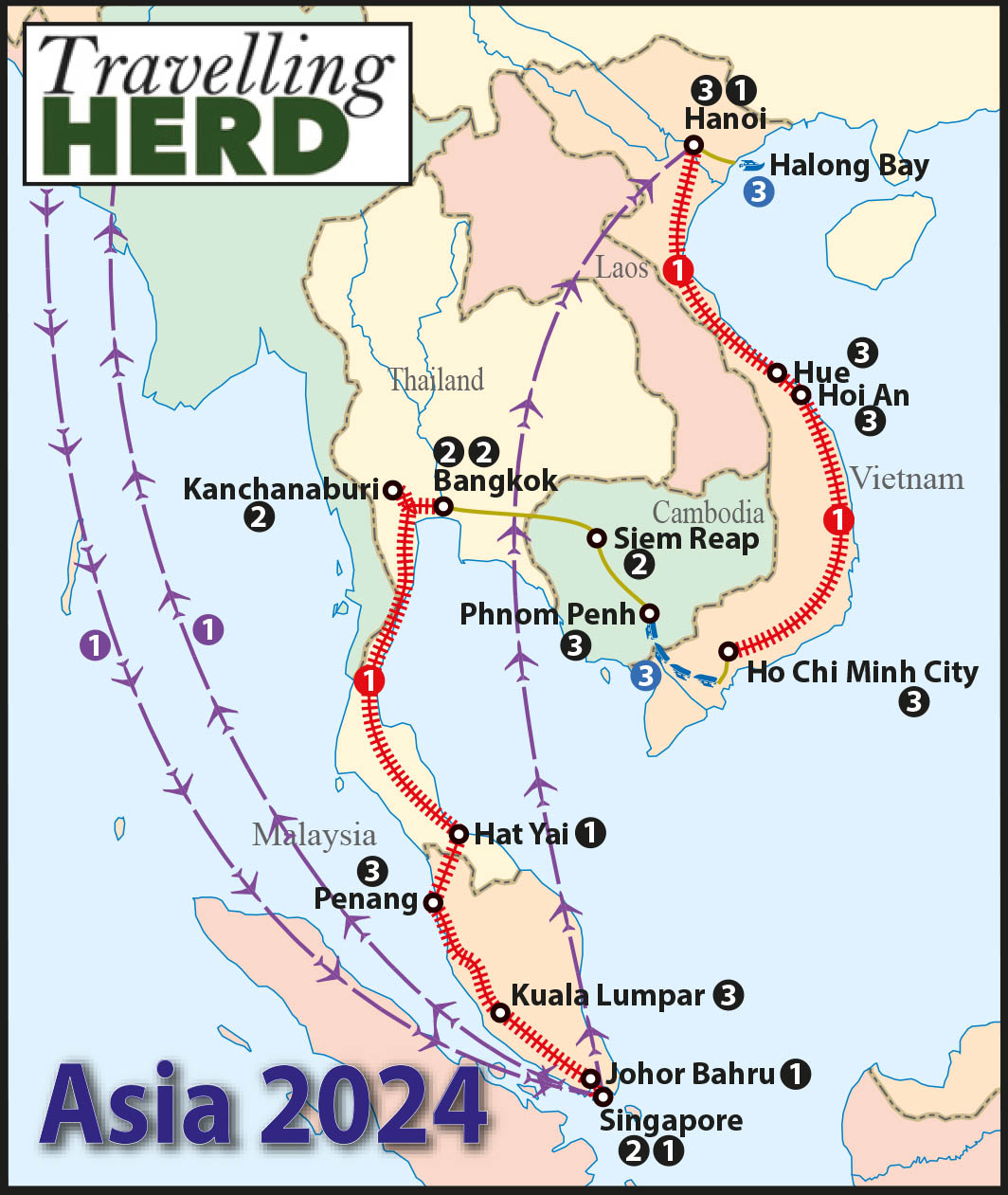




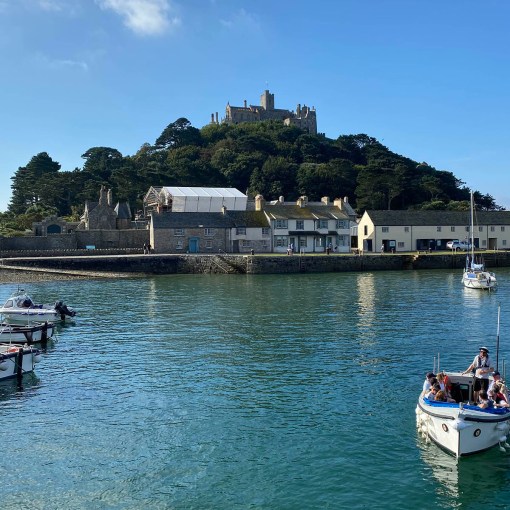

One thought on “Asia ’24 #8: St Patrick’s Day in Hội An”
Fab hat Matilda, hope you bought it? (…hang it on the wall at home!) Great trip notes as usual. Bon voyage xx